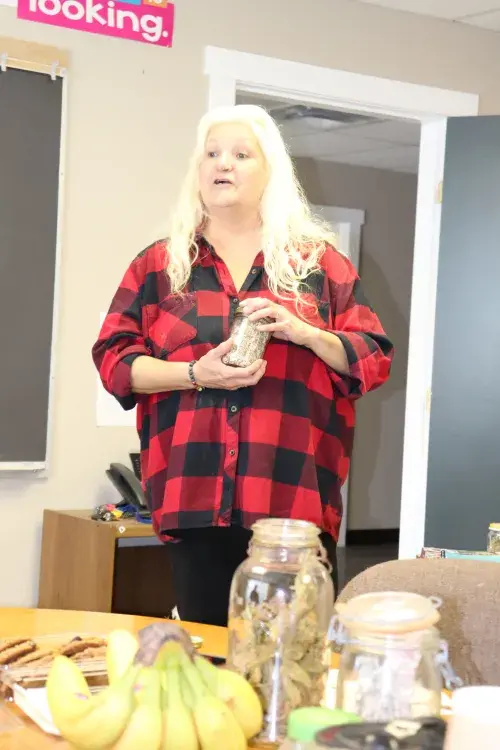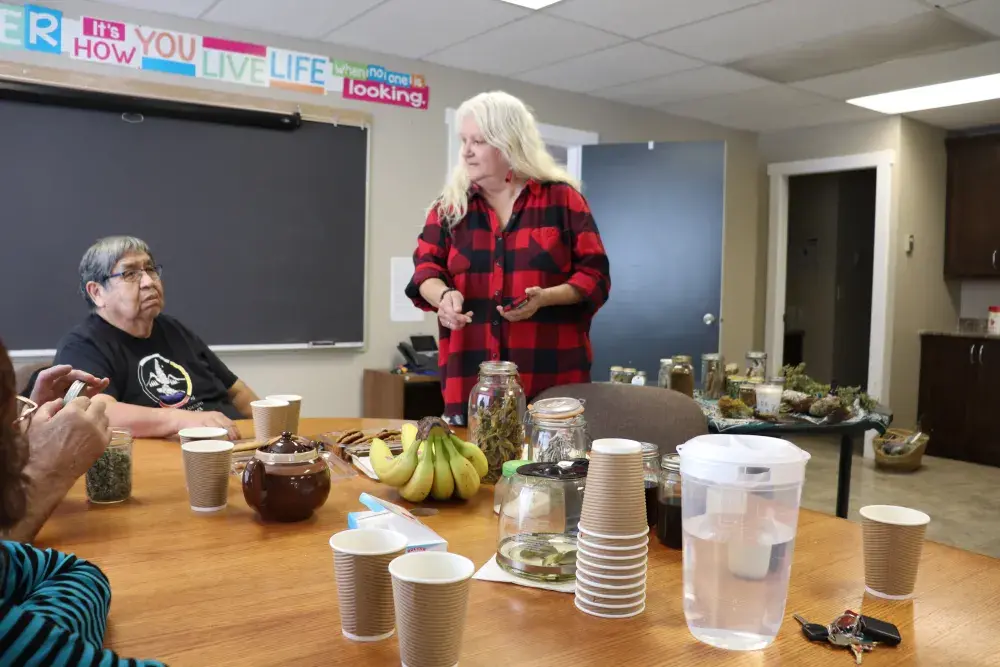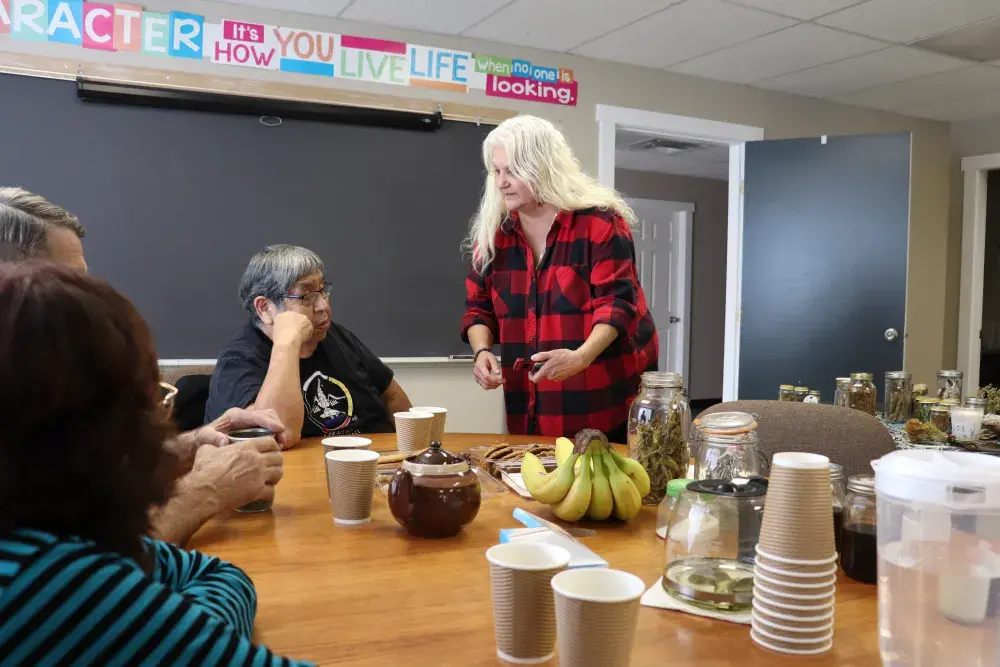A walk in the forest, or even a gander around your house, could yield a basket load of medicinal plants if one knows what to look for. That is what Darlene Leonew shared with a group of local elders wanting to learn about medicinal plants at the Port Alberni Friendship Center.
Surrounded by mason jars of dried leaves, roots, flowers and other concoctions, Leonew invited the elders to learn about each plant and what it is used for at a PAFC event held Oct. 21 at their Wellness Centre on 4th Avenue.
“I’m passionate about medicine plants – I can talk about it all day long,” she laughed.
She was thrilled that her boyfriend gifted her six tubs of coconut oil for her birthday.
“He knows what I love to do, and he sometimes sits in the truck while I’m picking plants in the forest,” she shared.
Leonew, whose roots reach back to Ojibwe territory in Ontario, says she has elders there that have taught her about medicinal plants from their home. But she has lived most of her life in Nuu-chah-nulth territory where she became inspired by late Hupacasath elder Ed ‘Tat’ Tatoosh, who taught others what he knows through local medicine walks.
She also learned from elder Della Rice who is well known for teaching medicinal plants.
“There’s also been a lot of book learning, the internet and hands-on learning,” Leonew told Ha-Shilth-Sa.
She has experimented with recipes and perfected them through trial and error.
She offered her guests hot bay leaf water, more like a tea, telling them it is high in vitamin c. The bay leaf can be grown locally. Leonew has a friend that grows the plant and offers her leaves every year. She dries the leaves and stores them in mason jars.
Leonew passed around jars of different medicines, briefly explaining what each one is made of, how it is made and what it can be used for. She had chickweed salve made with coconut oil and a little beeswax. It is used for minor skin conditions like eczema, abrasions, and burns.
The cannabis and devils’ club salve is used for muscle or arthritic pain. Her collection of prepared plants included eucalyptus, rosemary, lilac, lavender, sage, horsetail, yarrow, chamomile, devil’s club, rosehips, dandelion and much more.
There were teas and tinctures used for treating anxiety, headaches, or providing immune support. And there’s even a plant preparation that Leonew says helps reduce cravings for alcohol, helpful for those that are in early recovery.
Many of her medicines are made in her home from plants found in local forests or even just from a walk along the waterfront trail in Port Alberni, according to Leonew. But she warns, its important to confirm what plant you are harvesting because there are some look-alikes that may not be good for consumption.
Besides learning medicine recipes from elders, Leonew has a collection of books that she learns from. There are two things to keep in mind when using traditional medicinal plants: you must give them time to work, and you must believe in the healing power of the plants.
Leonew shares her medicinal plant knowledge at PAFC events like elders groups or in the daycare. She’s attended events and delivered classes for local groups.
She credits several Nuu-chah-nulth elders for sharing their teachings with her and is aware that some warn that certain medicine ingredients and/or recipes are supposed to be kept secret.
“There are some things I can’t share - but we also can’t gate-keep either, or else nobody could learn,” she said.
Leonew recalls advice given to her by late Hesquiaht elder, Tupaat (Julia Lucas): “When you learn something new, you share it with four people.” That is how teachings are kept alive, Leonew shared.
Calling her hobby fun, Leonew says she hopes someday to write a book about medicinal plants or teach in schools.



